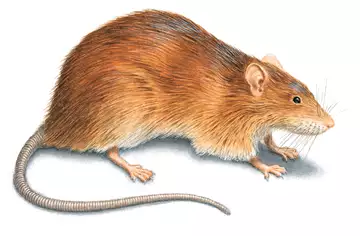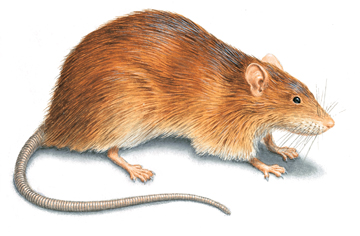- Contact
- 01211118453
- Send Email
- info@spider-eg.com
Norway Rat

Norway Rat Facts & Identification
Latin Name
Rattus norvegicus
Appearance
What Do They Look Like?

- Size: They can reach lengths of 40 cm, and their tails alone can measure 21 cm. They are large rodents that may weigh in excess of 500 grams.
- Color: Norway rats have fur that is brown or gray in color.
- Characteristics: These rodents are covered in shaggy fur. Their ears and tails are covered in scales, and their tails are shorter than their head and body.
How Did I Get Norway Rats?
Norway rats will gnaw away parts of the home to enlarge a potential entryway and often burrow their way inside by digging. Older buildings with poor construction and maintenance are at a higher risk for rodent problems.
What Attracts Them?
These rats are accomplished diggers and burrowers, so they are attracted to yards with:
- Gardens
- Uncut grass
- Thick shrubs
Entryways
Norway rats get into homes by entering through gaps and crevices. Rats can fit through holes as small as 1/2 inch. Their most common entryways are:
- Gaps under doors
- Holes from utility and plumbing lines
- Poorly fitting crawlspace doors
- Poorly maintained wall and foundation vents
How Serious Are Norway Rats?
Disease
Norway rats can be carriers of various diseases that can transfer to humans through rat urine and feces.
Damage
These rodents often severely damage building interiors by:
- Chewing on wiring or belongings
- Contaminating food
- Damaging foundations with their burrows
Signs of Infestation
Some signs of a Norway rat infestation include:
- Droppings: One of the most well-known signs of a Norway rat infestation are their droppings. These droppings are capsule-shaped and are 1.8 to 2.0 cm long. They can be found scattered along frequently traveled rodent pathways.
- Gnaw Marks: Another sign of these rodents are their gnaw markings on food and objects such as utility lines.
- Grease Stains: Rub marks or grease stains caused by rats running along an edge also can indicate activity. In general, the darker the stain, the greater the activity.
- Visual Sightings: Sightings of these pests during the day often indicate large infestations. Outdoor sightings of burrows surrounding the building may be an indication of their nests.
How Do I Get Rid of Norway Rats?
What You Can Do
Read the following tips for keeping Norway rat infestations at bay:
- Seal Containers: Garbage cans should have a secure lid and be emptied on a regular basis. Food, including bird seed and pet food, should be kept in sealed containers.
- Block Entryways: Windows and doors should not be left open, particularly overnight when rodents are most active. Any gaps around doors, windows, or chimneys should be closed. Dryer vents should have screen covers, and tree branches touching the home should be trimmed.
- Reduce Food Sources: Clean up fallen bird seed from the base of bird feeders. Make sure pet food is out of reach from Norway rats. Remove all pet feces in your yard.
- Reduce Water Sources: Homeowners should fix plumbing leaks, remove outdoor containers retaining water, and ensure spigots and sprinklers are not dripping.

